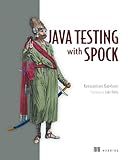Best Groovy and Java Integration Tools to Buy in December 2025
To integrate Groovy with Java, you can leverage the interoperability features provided by both languages. Groovy can seamlessly work with Java libraries and frameworks, allowing you to use existing Java code in your Groovy projects.
One way to integrate Groovy with Java is by creating a Maven project that includes both Groovy and Java source files. You can use the Groovy compiler plugin to compile Groovy code alongside Java code in your project. This allows you to call Java classes from Groovy code and vice versa.
Additionally, you can use annotations in Groovy to access Java annotations and create interoperable code. Groovy's dynamic typing and concise syntax make it easy to work with Java classes and APIs. By creating a Groovy class that extends a Java class or implements a Java interface, you can take advantage of the powerful features of both languages.
Overall, integrating Groovy with Java allows you to leverage the strengths of both languages and build robust and flexible applications. With the right approach, you can seamlessly combine Groovy and Java code to create powerful and efficient software solutions.
How to call Java method from Groovy closure?
You can call a Java method from a Groovy closure by using the dot notation to access the method on the Java object. Here is an example demonstrating how to call a Java method from a Groovy closure:
// Define a Java class with a method class MyClass { void myMethod() { println "Hello from Java method" } }
// Create an instance of the Java class MyClass myClass = new MyClass()
// Define a Groovy closure def myClosure = { // Call the Java method from the closure myClass.myMethod() }
// Execute the closure myClosure()
In this example, we have defined a Java class MyClass with a method myMethod(). We then create an instance of MyClass and define a Groovy closure myClosure that calls the myMethod() method on the myClass object. Finally, we execute the closure using myClosure().
How to call a Java method from Groovy?
To call a Java method from Groovy, you can simply create an instance of the Java class and then call the method on that instance. Here's an example:
// Assume you have a Java class called MyClass with a method called myMethod
import com.example.MyClass
def myClass = new MyClass() myClass.myMethod()
In this example, we import the Java class MyClass, create an instance of it, and then call the myMethod method on that instance. You can pass arguments to the method in the same way you would in Java.
How to integrate Groovy with Spring framework?
To integrate Groovy with Spring framework, you can follow these steps:
- Add the necessary dependencies to your project. Make sure you include both the Groovy and Spring dependencies in your project's build file.
- Create your Groovy beans and services. You can create Groovy classes that implement Spring's interfaces or annotations.
- Configure Spring to recognize and scan your Groovy classes. You can do this by adding the necessary configuration to your Spring application context file or using annotations like @ComponentScan.
- Use Groovy scripts for Spring beans configuration. You can also use Groovy scripts for defining your Spring beans instead of XML or Java configuration files. This can make your configuration more concise and readable.
- Take advantage of Groovy's dynamic nature. Groovy's dynamic nature can be useful when working with Spring beans, as you can easily create and modify beans at runtime.
By following these steps, you can easily integrate Groovy with Spring framework and take advantage of the benefits that both technologies offer.
What is the learning curve for integrating Groovy with Java?
The learning curve for integrating Groovy with Java can vary depending on the individual's level of experience with both languages.
For those already familiar with Java, Groovy's syntax and features may be relatively easy to pick up, as Groovy is designed to be compatible with Java and can be seamlessly integrated into Java projects. In this case, the learning curve may be quite shallow, with developers able to start using Groovy in their Java projects with minimal effort.
However, for those less familiar with either language, the learning curve may be steeper. Groovy's dynamic nature and additional features may require some time to fully understand and incorporate into Java projects. In this case, developers may need to spend more time learning the syntax and semantics of Groovy before being able to effectively integrate it with Java.
Overall, the learning curve for integrating Groovy with Java can range from relatively easy to more challenging, depending on the individual's existing knowledge and experience with the languages involved. With persistence and practice, developers should be able to successfully integrate Groovy with Java and take advantage of the benefits that both languages have to offer.





